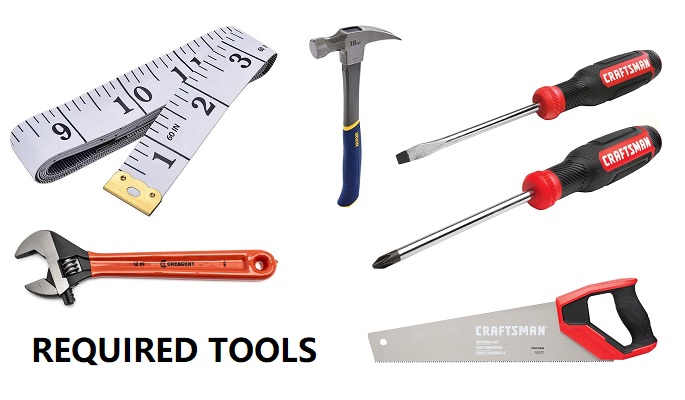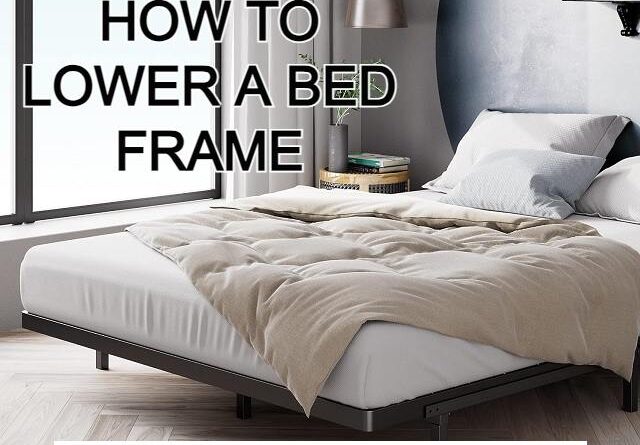DIY Guide: How to Lower a Bed Frame in 4 Easy Steps
Are you finding your bed a bit too high for comfort? Whether it’s for better accessibility, aesthetic preferences, or practical reasons, lowering a bed can make a significant difference in your daily comfort. This DIY guide will walk you through various methods on how to lower a bed safely and effectively. We’ll cover essential tools and materials, provide step-by-step instructions, and offer tips to ensure your project is a success.
Understanding Bed Heights and Types
Before diving into the methods, it’s crucial to understand the different bed types and their standard heights. This knowledge will help you determine the best approach for lowering your bed.
Standard Bed Heights
- Platform Beds: Typically range from 16 to 18 inches high.
- Traditional Beds with Box Springs: Usually stand between 25 to 30 inches high.
- Loft and Bunk Beds: Often exceed 50 inches, designed for maximizing space.
Factors Influencing Bed Height
- Mattress Thickness: Thicker mattresses can significantly increase bed height.
- Bed Frame Style: Some frames come with adjustable heights, while others do not.
- Box Spring or Foundation: The type and height of your box spring or foundation can add extra inches to your bed.
Tools and Materials Needed
Gathering the right tools and materials beforehand will make the process smoother.
Basic Tools

- Tape Measure
- Screwdriver
- Adjustable Wrench
- Hammer
- Saw (for cutting bed legs if necessary)
- Sandpaper

Materials
- Bed Risers (if planning to remove them)
- Low-Profile Box Spring or Foundation
- Replacement Bed Slats
- Furniture Pads (to protect floors)
Safety Precautions

Ensuring safety during the process is paramount. Follow these tips to avoid accidents and damage.
General Safety Tips
- Work on a Stable Surface: Ensure your working area is flat and stable to prevent accidents.
- Protective Gear: Wear gloves and safety glasses when using tools.
- Handle Heavy Components Carefully: Get help if needed when moving or lifting heavy parts of the bed.
Specific Precautions
- For Adjustable Frames: Make sure to follow the manufacturer’s instructions to avoid damaging the frame.
- When Cutting Bed Legs: Ensure the legs are cut evenly to maintain bed stability.
Methods on How to Lower a Bed Frame
There are several effective methods to lower a bed. Choose the one that best fits your bed type and personal needs.
1. Adjusting Bed Frame
Step-by-Step Guide
- Identify Adjustable Features: Check if your bed frame has adjustable height settings.
- Remove the Mattress and Box Spring: Set them aside carefully.
- Locate Adjustment Points: Usually found on the bed frame legs.
- Adjust the Height: Use the appropriate tool to lower the frame to the desired height.
- Reassemble the Bed: Place the box spring and mattress back on the frame.
2. Removing or Modifying Bed Risers
Step-by-Step Guide
- Check for Bed Risers: Inspect the bed legs to see if risers are being used.
- Remove Bed Risers: Simply lift the bed and remove the risers.
- Alternatives to Risers: If you need under-bed storage, consider using low-profile storage solutions.
3. Using a Low-Profile Box Spring or Foundation
Understanding Low-Profile Options
Low-profile box springs or foundations are thinner than standard ones, reducing bed height without compromising support.
Step-by-Step Guide
- Measure Your Current Box Spring: Determine its height.
- Purchase a Low-Profile Box Spring: Choose one that matches the dimensions of your mattress.
- Replace the Standard Box Spring: Remove the old box spring and replace it with the new low-profile version.
4. Custom Solutions
Cutting Bed Legs
- Measure and Mark: Decide how much you want to lower the bed and mark the legs accordingly.
- Cut the Legs: Use a saw to cut the legs to the desired length.
- Sand the Edges: Smooth the cut edges with sandpaper to prevent splinters.
- Reassemble the Bed: Ensure the bed is stable before use.
Modifying Platform Beds
- Remove Excessive Height Elements: If the platform bed has extra layers or components, consider removing them.
- Reinforce the Frame: Ensure the frame remains sturdy after modifications.
Also Read: 5 Easy DIY Steps on How to Fix a Broken Bed Rail
Testing and Adjustments
After lowering the bed, it’s essential to test its stability and comfort.
Stability Check
- Ensure All Legs Are Even: The bed should not wobble.
- Secure All Bolts and Screws: Tighten any loose components.
Comfort Test
- Evaluate Bed Height: Sit and lie on the bed to ensure it’s comfortable for daily use.
- Adjust if Necessary: Make minor adjustments if the bed height is not perfect.
Making Final Adjustments
- Recheck Measurements: Double-check the new bed height.
- Fine-Tune: Make small tweaks to achieve the desired height.
Troubleshooting Common Issues
Even with careful planning, issues can arise. Here are some common problems and their solutions.
Bed Frame Instability
- Check for Loose Bolts: Tighten any loose bolts or screws.
- Add Support: Consider adding extra slats or supports if the frame is unstable.
Mattress Slippage
- Use Non-Slip Pads: Place non-slip pads between the mattress and box spring.
- Secure the Mattress: Use mattress straps or brackets.
Reverting Changes
- Keep Original Parts: Save any parts you remove in case you need to revert the changes.
- Follow Original Instructions: Refer to the bed’s original assembly guide if needed.
Conclusion
Lowering a bed can enhance comfort and accessibility, making it a worthwhile DIY project. By following this comprehensive guide, you can achieve the perfect bed height tailored to your needs. Remember to prioritize safety, gather the necessary tools and materials, and follow the step-by-step instructions for a successful outcome.
Also Visit Bedding Expertise for more valueable information on bedding topics!

Pingback: Page Not Found - Bedding Expertise
Pingback: How To Repurpose A Bed Into A Futon: 5 Easy DIY Steps - Bedding Expertise
Pingback: Upgrade Existing Bottom Storage Bed With Plywood Top IN 5 Easy DIY Steps - Bedding Expertise